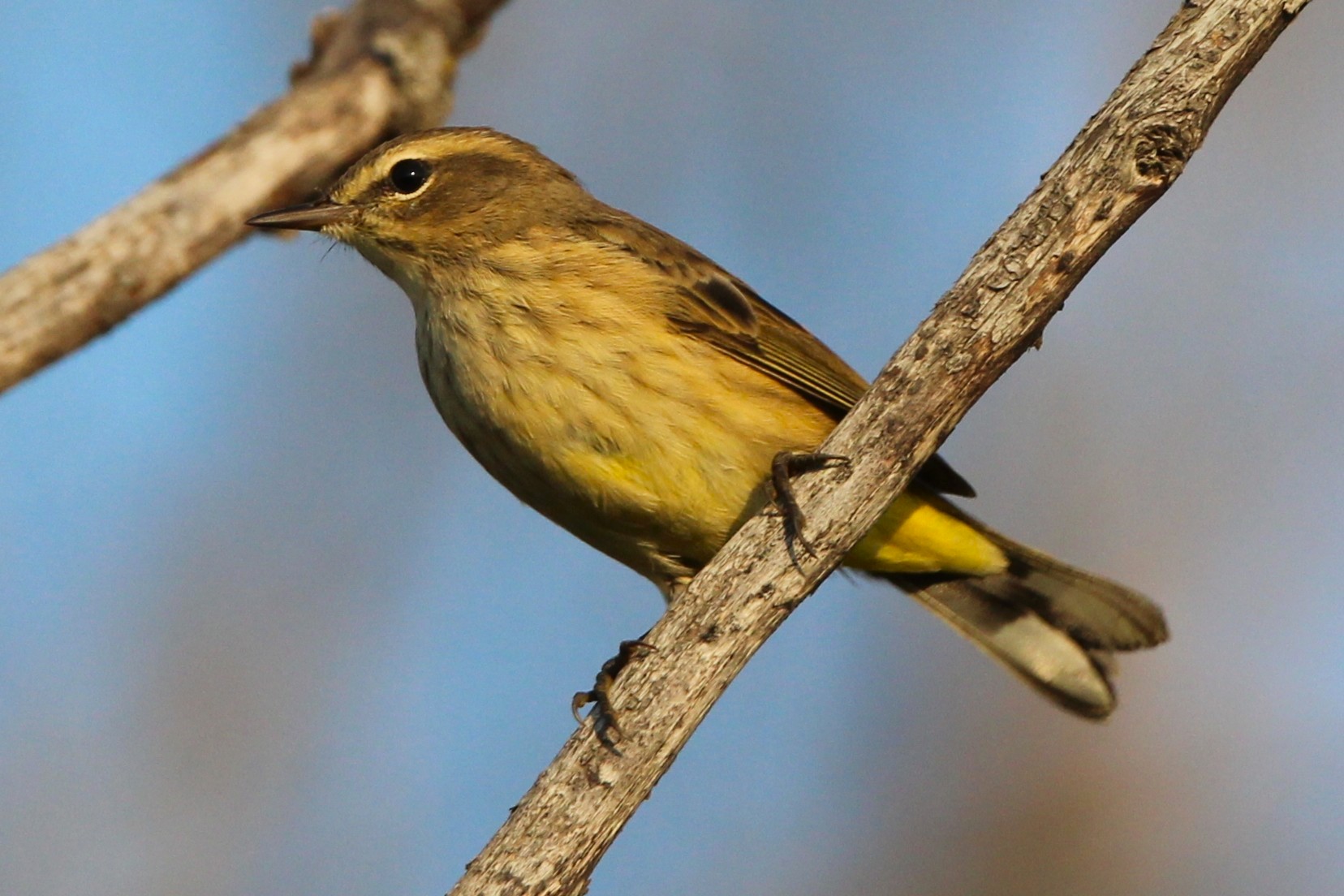On a recent trip to northeastern Saskatchewan, there was one birding location that was truly “feather-full”. This quiet farm road, Ravine Bank Cemetery road, seldom traveled, blessed with trees and filled with shrubs on both sides, conceals birds, chipmunks and squirrels, waiting for the birder to appreciate. At the south end of the trees, round hay bales hug the thin treeline, a treeline perhaps a metre in depth. It would be easy to pass by this three hundred metre long road and miss the homes of nature’s tiny creatures. For three birders, this has become a regular stop the past number of years.
Elaine has hidden herself near the bales at the south end of the east side row of trees, while I watch the south end on the west side of the road. Initially, Yellow-rumped warblers, at times in pairs, perch themselves on bare aspen tree branches, The morning sun illuminates these energetic songbirds. The cheery call of the chickadee and the almost irritating screech of the blue jay add to nature’s late summer orchestra. Another bird, the first one, then a second and then a fifth, seem to magically appear on the limbs of thin, gnarled aspens. Its size, posture, color and tail, tell us we are seeing a special bird.
Elaine recognizes it immediately. The smooth clicking of the shutter, audible after careful aim and focus, starts our first of five visits to this tiny part of Saskatchewan. These birds aren’t shy, posing it seems, intentionally for the cameras. These Palm warblers, although tropically named by J.P. Gmelin in 1789, is the second most northern breeding warbler species with 98% of this species making both Alberta and Saskatchewan home a key part of each year. A larger species of warbler, it is brilliantly colored during breeding season. Bright yellow underparts generously streaked with a rusty color like its cap and sporting yellow brows, makes this bird a beauty. Palm warblers in the sister provinces are more likely to have whitish underbellies, yellow undertails and pale-hued eyebrows. With breeding season passed, “our” warblers sport dulled colors, except for the yellow undertails.
A ground nesting bird, this warbler spends much time earthbound, bobbing its sizable tail as it explores the turf for insect life. Berries and seeds make up a part of the diet in addition to insects. As the summer days wane, these Palm warblers begin to head south to their winter homes, likely located in Florida, the American Gulf coast and the Caribbean Islands, where they were first identified. Fortunately, unlike other warbler species, the Palm warbler is plentiful.
This birding trio returns four more times on this trip to this peaceful stretch of road. We enjoy watching our “palms” bask in the morning and in the late afternoon sunshine. Kinglets, white-throated sparrows and the yellow-rumps join them. Our world is a tiny space, shared with quiet lives.
Palms in a Mixed Forest?

In response to Canada's Online News Act and Meta (Facebook and Instagram) removing access to Canada's local news from their platforms, Anchor Media Inc encourages you to get your news directly from your trusted source by bookmarking this site and downloading the Rogue Radio App. Send your news tips, story ideas, pictures, and videos to info@anchormedia.ca.





